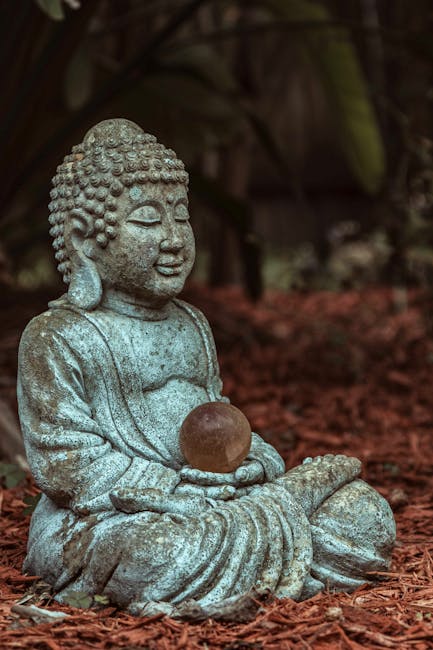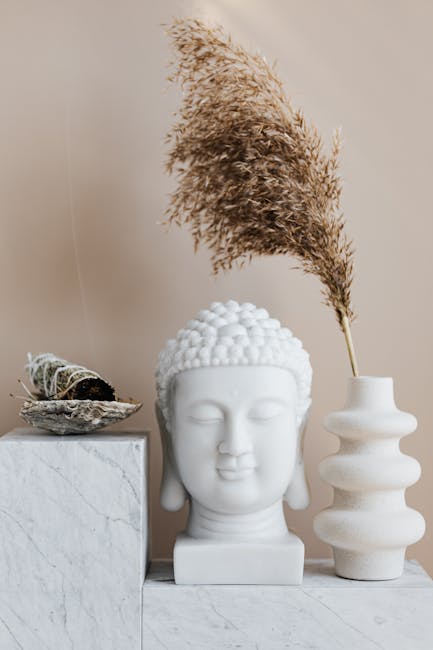In the hustle and bustle of modern life, finding tranquility can seem like a quest for the Holy Grail. Yet, there’s an ancient practice that has been guiding individuals toward serenity and self-awareness for centuries: Vipassana Buddhism. This meditative tradition offers a path to mindful living and inner peace, and it’s more accessible than you might think.
Key Takeaways
- Vipassana Buddhism is an ancient meditation practice focused on self-observation and mindfulness.
- Mindfulness, a core principle of Vipassana, can be integrated into daily life and has numerous mental and emotional health benefits.
- Vipassana meditation techniques are simple yet profound, emphasizing awareness of bodily sensations and thoughts.
- Regular practice can lead to transformative personal growth and a deeper understanding of existence.
- Vipassana has a positive impact on mental health and is supported by scientific research.
- The practice can be deepened through retreats and guidance from experienced teachers.
- Vipassana’s principles are influencing contemporary mindfulness practices and contributing to global spiritual movements.
Introduction to Vipassana Buddhism
Definition of Vipassana
Vipassana, which means to see things as they really are, is one of India’s most ancient techniques of meditation. It’s a practice of continuous self-observation, focusing on the deep interconnection between the mind and body, which can be experienced directly by disciplined attention to physical sensations.
Historical background
This form of meditation was rediscovered by Gotama Buddha more than 2,500 years ago and was taught by him as a universal remedy for universal ills, i.e., an Art of Living. The practice of Vipassana has been preserved in the Buddhist countries of Asia and is now spreading in popularity across the globe.
Core principles of Vipassana Buddhism
At the heart of Vipassana Buddhism are the principles of mindfulness, self-observation, and the realization of impermanence. These principles guide practitioners to a deeper understanding of the nature of reality and the self, leading to a state of peace and liberation.

Understanding Mindfulness in Vipassana
The role of mindfulness in Vipassana
Mindfulness as a quality
Mindfulness, in the context of Vipassana, is the quality of full awareness of the present moment. It is a state of active, open attention to the current experiences without judgment.
The relationship between mindfulness and meditation
While mindfulness can be practiced at any moment, it is cultivated more deeply through meditation. Vipassana meditation is the formal practice of mindfulness, where one learns to pay attention to the breath, bodily sensations, thoughts, and emotions in a structured way.
The practice of mindfulness in daily life
Mindfulness can be integrated into daily activities, transforming routine tasks into opportunities for awareness and presence. This integration is a key aspect of Vipassana, as it allows the practice to permeate all aspects of life.
Benefits of mindfulness for mental and emotional health
The benefits of mindfulness are vast, including reduced stress, improved emotional regulation, and enhanced cognitive function. These benefits are not only felt by practitioners but have been confirmed by numerous scientific studies (source).

The Practice of Vipassana Meditation
Techniques of Vipassana meditation
Observation of bodily sensations
The primary technique in Vipassana meditation is the observation of bodily sensations. Practitioners learn to notice subtle physical sensations without reacting to them, which cultivates equanimity and self-control.
Awareness of thoughts and emotions
Alongside bodily sensations, meditators also become aware of the flow of thoughts and emotions, observing them with detachment and understanding their transient nature.
Setting up a Vipassana meditation practice
Finding a quiet space
To begin practicing Vipassana meditation, it’s important to find a quiet and comfortable space where one can sit undisturbed for a period of time.
Establishing a routine
Consistency is key in meditation practice. Establishing a regular routine, whether it’s daily or several times a week, helps to deepen the practice and its effects.
Challenges and tips for beginners
Starting a meditation practice can be challenging. Beginners may face difficulties such as restlessness or doubt. It’s important to approach these challenges with patience and persistence, and to seek guidance from experienced practitioners or resources like online courses and guided meditations.

Integrating Vipassana into Everyday Life
Formal vs. informal practice of mindfulness
Vipassana can be practiced both formally, in seated meditation, and informally, as part of daily life. Both forms of practice support and enhance each other.
Mindful activities beyond seated meditation
Mindful eating
Mindful eating is a practice of paying full attention to the experience of eating and drinking, both inside and outside the body.
Mindful walking
Mindful walking involves paying close attention to the experience of walking, noticing the sensations in your feet and the rhythm of your breath.
Overcoming obstacles to mindful living
Common obstacles to mindful living include distraction, busyness, and habitual patterns of thought. Overcoming these requires intention and practice, often supported by the Vipassana community or resources like a meditation diary.

The Path to Inner Peace through Vipassana
Deepening understanding of existence
Vipassana meditation leads to a deeper understanding of the nature of existence, revealing the impermanent and interconnected nature of all things.
The transformative impact of continuous practice
Continuous practice of Vipassana can have a transformative impact on an individual’s life, leading to increased peace, compassion, and wisdom.
Real-life stories of transformation and peace
There are countless stories of individuals who have found profound peace and transformation through Vipassana. These narratives serve as inspiration for those on the path.

Vipassana and Mental Health
Vipassana as a therapeutic tool
Vipassana is increasingly being recognized as a valuable tool in mental health therapy, helping individuals to cope with stress, anxiety, and depression.
The synergy of mindfulness and meditation in healing
The synergy of mindfulness and meditation offers a powerful combination for healing and well-being, as they complement each other in fostering mental health.
Scientific research supporting Vipassana’s benefits
Scientific research supports the benefits of Vipassana for mental health, with studies showing its positive effects on the brain and emotional regulation (source).
Advancing in Vipassana Practice
Progressing from beginner to advanced levels
As practitioners continue with Vipassana, they naturally progress from beginner to more advanced levels of insight and understanding.
Retreats and intensive practice opportunities
Retreats offer opportunities for intensive practice, allowing individuals to deepen their meditation and mindfulness skills in a supportive environment.
The role of a teacher or guide in deepening practice
A teacher or guide can play a crucial role in deepening one’s practice, offering personalized instruction and support.

The Broader Impact of Vipassana on Society
Vipassana’s influence on contemporary mindfulness practices
Vipassana has had a significant influence on contemporary mindfulness practices, shaping the way people approach meditation and awareness in the West.
Contributions to peace and compassion in communities
The principles of Vipassana contribute to peace and compassion in communities, as individuals who practice tend to become more empathetic and understanding.
Vipassana’s role in global spiritual movements
Vipassana is playing a role in global spiritual movements, promoting values of non-violence, tolerance, and self-awareness.
Resources for Further Exploration
Books and scriptures on Vipassana Buddhism
For those interested in delving deeper, there are many books and scriptures available that explore the teachings and practices of Vipassana Buddhism. You can find a selection of these at Strand Books.
Online courses and guided meditations
There are also online courses and guided meditations available for those who wish to learn more about Vipassana or deepen their practice from the comfort of their own home.
Vipassana meditation centers and communities
For a more immersive experience, there are Vipassana meditation centers and communities around the world that welcome new practitioners.
Conclusion
Recapitulation of the key points
Vipassana Buddhism offers a path to mindful living and inner peace through the practice of self-observation and mindfulness. It is a practice that can be integrated into daily life and has numerous benefits for mental and emotional health.
Encouragement for the journey towards mindful living and inner peace
Whether you are just beginning your journey or seeking to deepen your practice, Vipassana Buddhism provides a supportive and transformative path. As you embark on this journey, remember that each moment of mindfulness brings you closer to a life of serenity and self-awareness.
Unfolding Serenity: The Vipassana Buddhism FAQ for Mindful Living and Inner Peace
What is Vipassana Buddhism?
Vipassana Buddhism is a branch of Buddhist practice that focuses on insight meditation. It aims to cultivate a deep, personal understanding of the true nature of reality through direct observation of one’s own mind and body. The practice involves observing sensations throughout the body, understanding their impermanent nature, and developing insight into the three marks of existence: impermanence, suffering, and non-self.
How does Vipassana meditation differ from other forms of meditation?
Vipassana meditation is distinct in its emphasis on insight as the primary goal, rather than concentration or tranquility, which are often the focus of other meditation practices. It encourages a direct and continuous observation of physical sensations and mental phenomena, allowing practitioners to experience the impermanent and interconnected nature of all things, leading to a profound understanding that can bring about liberation from suffering.
Is Vipassana Buddhism religious or secular?
Vipassana Buddhism has roots in the Buddhist tradition and is considered a spiritual practice. However, the technique of Vipassana meditation itself is non-sectarian and can be practiced by people of any religion or no religion at all. It is often taught in a secular context, emphasizing practical benefits such as stress reduction, emotional regulation, and enhanced self-awareness.
What are the main teachings of Vipassana Buddhism?
The main teachings of Vipassana Buddhism revolve around the Four Noble Truths, which explain the nature of suffering and the path to its cessation, and the Noble Eightfold Path, which provides ethical and meditative practices leading to enlightenment. Additionally, Vipassana emphasizes the Three Marks of Existence: impermanence, suffering, and non-self, as key insights to be realized through meditation.
Can beginners practice Vipassana meditation, and how do they start?
Yes, beginners can practice Vipassana meditation. It is advisable to start with guidance from a qualified teacher or by attending a Vipassana meditation retreat, which typically lasts 10 days and provides comprehensive instruction and support. Beginners can also start by learning basic mindfulness meditation techniques, which form the foundation of Vipassana practice.
What is a Vipassana retreat, and what should one expect when attending one?
A Vipassana retreat is an intensive meditation program, often lasting 10 days, where participants live in a secluded environment, abstaining from external distractions. Attendees follow a strict schedule of meditation, observe noble silence (refraining from communication with fellow meditators), and adhere to a code of moral conduct. The retreat is designed to immerse participants in the practice to develop mindfulness and insight.
How much time should one dedicate to Vipassana meditation daily?
The amount of time dedicated to Vipassana meditation can vary depending on individual circumstances. Traditionally, it is recommended to practice for one hour in the morning and one hour in the evening. However, even shorter daily sessions can be beneficial for maintaining mindfulness and progressing in the practice. Consistency is more important than the length of each session.
What are the benefits of practicing Vipassana meditation?
Practicing Vipassana meditation can lead to numerous benefits, including increased self-awareness, improved emotional regulation, reduced stress and anxiety, and a deeper sense of inner peace. Over time, practitioners may develop greater compassion and understanding, enhanced concentration, and the ability to respond to life’s challenges with equanimity. Ultimately, the practice aims to lead to spiritual liberation and enlightenment.
Is it necessary to become a Buddhist to practice Vipassana meditation?
No, it is not necessary to become a Buddhist to practice Vipassana meditation. The technique is universal and can be practiced by anyone regardless of their religious or cultural background. The core principles of mindfulness and insight are applicable to all individuals seeking to understand the nature of their mind and reality.
How does one integrate Vipassana meditation into daily life?
Integrating Vipassana meditation into daily life involves establishing a regular meditation practice and applying mindfulness to everyday activities. This can include being fully present during routine tasks, observing thoughts and emotions without judgment, and practicing compassion and ethical behavior in interactions with others. The goal is to maintain a continuous awareness throughout the day, leading to a more mindful and peaceful existence.



